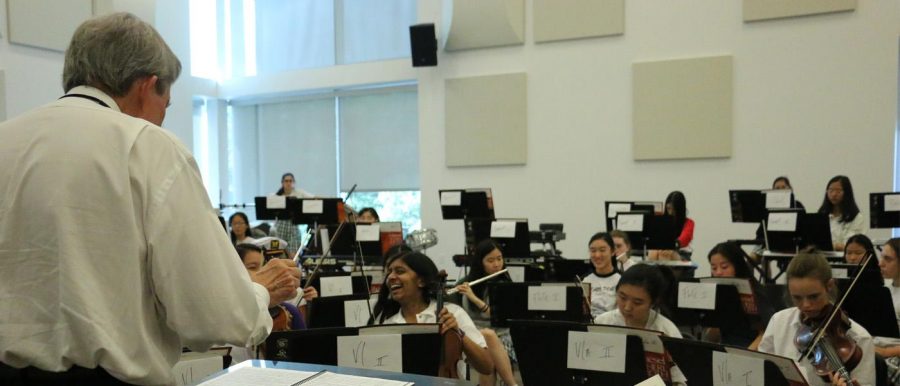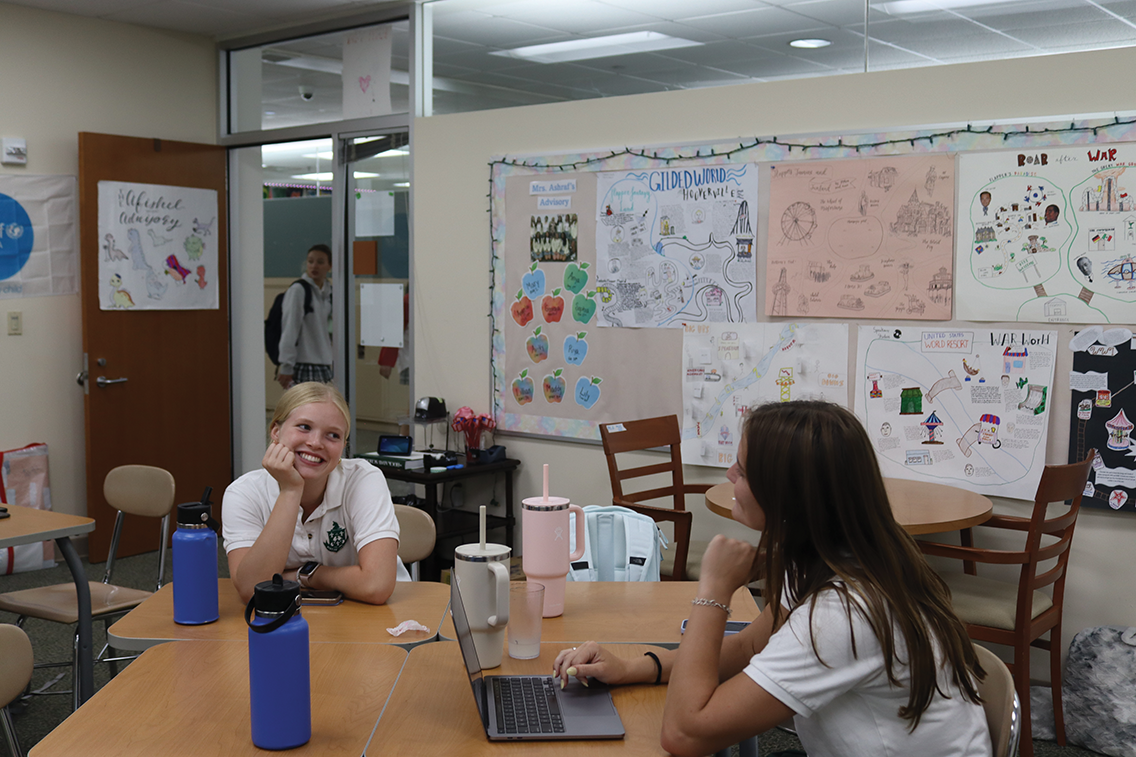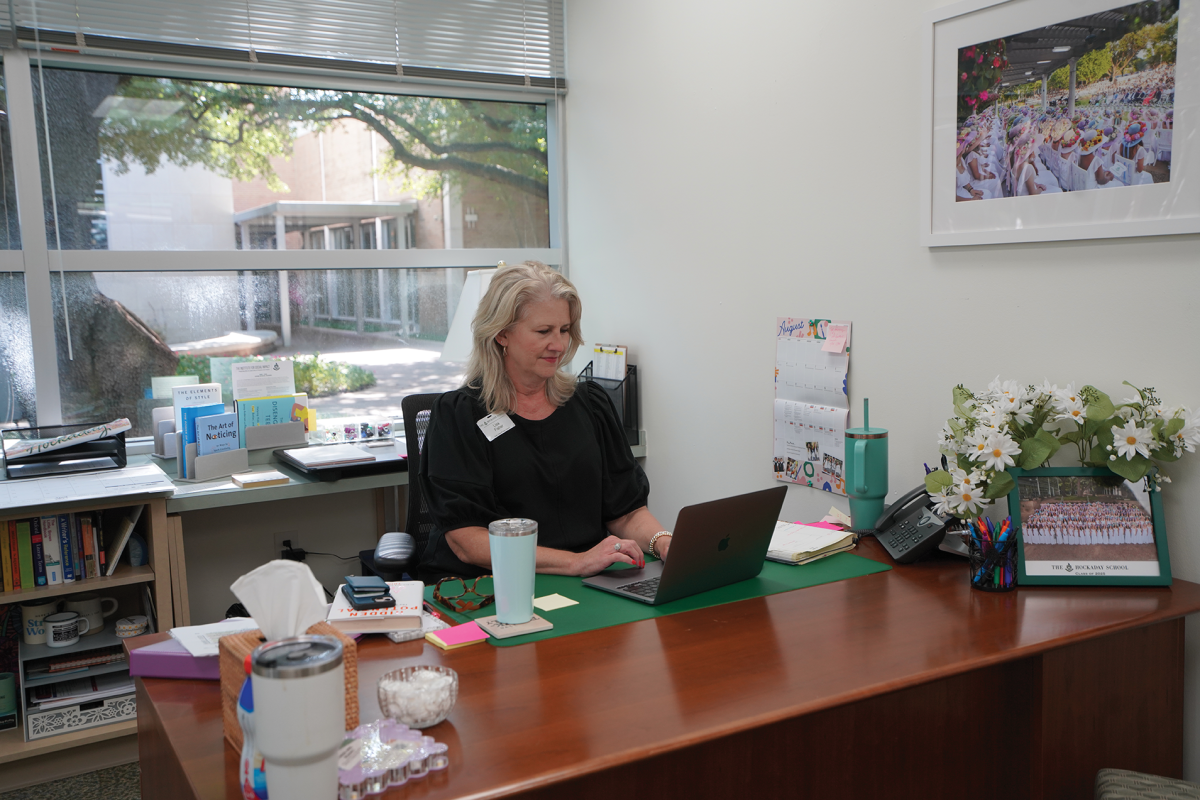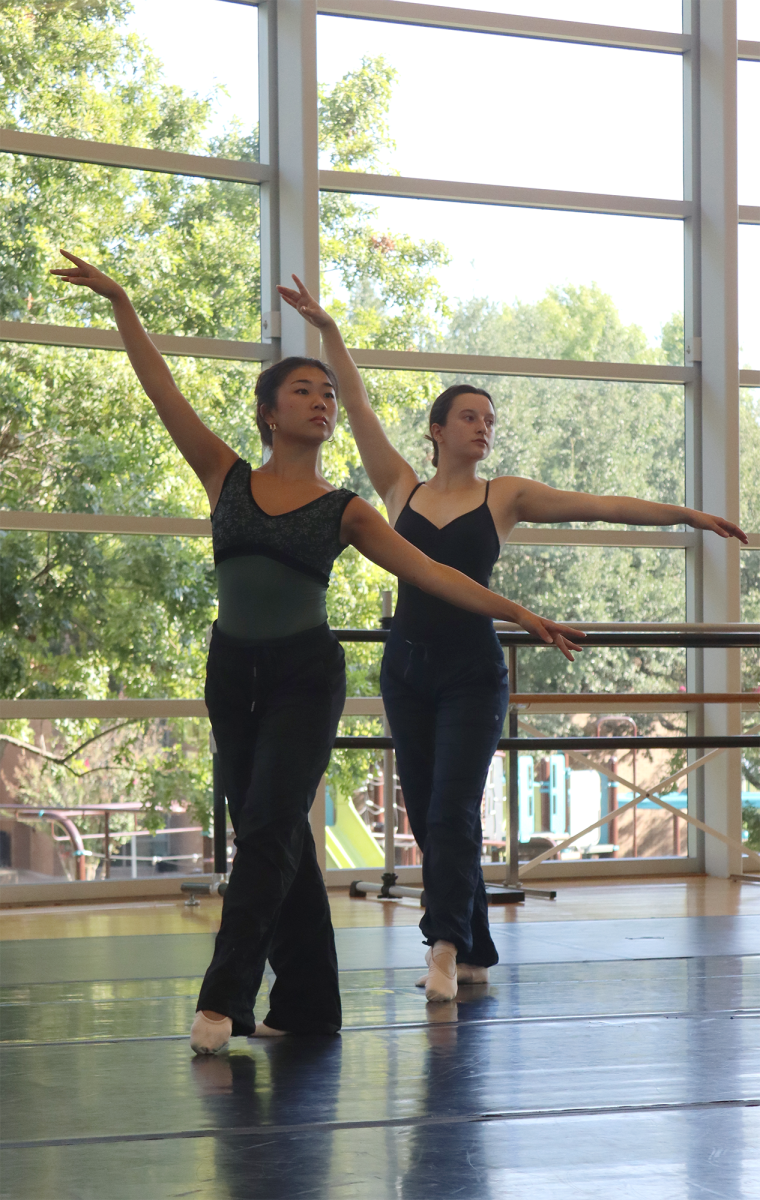Frantic morning runs from the science building to the main hallway. The rusty portable village that resided on campus the past two years. The yellow caution tape for construction, preventing students from using multiple entry ways. All of these are long gone with the welcoming of The Nancy A. Nasher and David J. Haemisegger Family Center for the Arts.
After countless meetings and over a year of planning for each feature of the building, the 2016-17 school year welcomed the newest addition to the Hockaday campus. Hockaday alumna Nancy Nasher and David Haemisegger donated $6 million to- ward the construction of the facility, which is Phase II of the Centennial Center.
The new center features a bigger the- ater, an art gallery with customizable exhibition space, a new black box theater, an outdoor amphitheater, a redesigned ceramics studio and expanded rooms for choir and orchestra. With Contractor Lee Lewis heading the project and Pritchard Associates acting as the liaison between the school and the contractor, each space was carefully designed by GFF Architects with teachers’ input to help ensure that the building would bene t the students as best as possible.
Fine Arts Department Chair and Upper School Orchestra conductor Ed Long appreciates the versatility of the rooms in the new fine arts building.
“There’s enough, not only complexity to each room, but such variation,” Long said. “Indeed, the facilities really respond to very specialized teacher needs and student needs.”
With new features of the ne arts building like the Lacerte black box and the Nasher-Haemisegger theater, the performing arts will be able to be more flexible and creative in their productions.
The fall play “The Boxer,” for example, will be set in the corner of the black box in order to utilize the real window on set. In addition, the seats will be arranged diagonally, which is not typical for a play. Drama teacher Emily Gray is already thinking of ways to take full advantage of the new facility.
“The black box is completely exible, so we can move the audience, the stage, and create all kinds of magic,” Gray said.
In the winter, the Upper School mu- sical will showcase the classic “Beauty and the Beast” and will utilize the expanded stage of the theater, which can accommodate up to 770 seats, and the additional features that come along with it.
“Beauty and the Beast is a big, scenic extravaganza,” Long said. “One thing it typically has, even in its Broadway manifestation, is drops. Now, with the full y spaces, we can drop an entire set in and take it out, which we simply couldn’t do in the old theater.”
And for the orchestra program, the building has brought a significant change. Housed in a portable outside the main building for many years, the orchestra now has a designated space with the building of the new facility. Unlike the portable, the room is extremely spacious and leaves plenty of room for each musician and her instrument.
Also, the theater will aid in the Upper School orchestra’s performance in the spring.
“In trying to do the finale of the Beethoven’s Symphony No. 9 [in D minor, Op. 125], we’ve never been able to put all those folks on stage. But now, suddenly we have wings and a stage, almost as if they are designed for that,” Long said.
The Center will also be utilized for more social, extracurricular events such as co eehouse, and Fine Arts Board Chair Tori Gudmundsson is looking forward to it.
“I’m excited because we are going to try to have co eehouse in di erent locations each time to mix it up,” Gudmundsson said.
The Fine Arts Board already plans to have one co eehouse in the new outdoor amphitheater, located between the new Center for the Arts and the Upper School building, and hopes to also utilize the black box and the the- ater to encourage more non-singing acts to get involved.
“In general, we are trying to use the building a lot to get people used to it,” Gudmundsson said.
As the new school year hype starts to settle down, a few minor challenges have been discovered with the new building. For example, the extensive amount of paneling in the orchestra room has left the acoustics at, while the black box has experienced the exact opposite problem.
However, the school has already made plans to alleviate these issues as soon as possible, and the teachers are not concerned about the turnaround.
“Things this complicated are going to have to be tweaked, and the school is very open to getting it right. It’s not an overnight process. Things have to be tried and tested and retried, which is hardly a surprise,” Long said. “But I don’t see anything going ahead that will end with a disappointing result.”
The Fine Art Department’s plans to move forward already show the level of excitement that will hopefully characterize the rest of the year. Each ne art is stepping out and trying something bold, in honor of the beginning of a new legacy.
And with the center’s completion, the next step for the department is taking on the daunting challenge of hosting the Independent Schools Association of the Southwest Fine Arts Festival next school year in 2018.
“When we start these facilities and inaugurate them, we are also reimagining them in terms of ISAS and hosting it in a year,” Long said.
While this unique challenge waits ahead, students and teachers remain eager as they continue to nd new and innovative ways to utilize the Center for the Arts and its features to the fullest.
“We tend to think of new facilities as new facilities rst and foremost but really, they are new opportunities,” Long said. “Each of those say, ‘Use me, utilize me, in- vent in me!’ I think students have a great chance not only to use a spanky new facility, but truly to ignite their own sense of adventure and o they go with new opportunities.”







